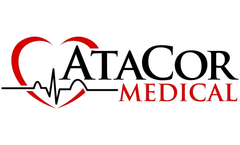Pulse Generator Articles & Analysis: Older
6 articles found
This would include not placing items such as earphones in close proximity to the implanted pulse generator. The IPG may affect the operation of other implanted devices such as cardiac defibrillators, pacemakers, or neurological stimulation systems. ...
ByCVRx
Scientific research has now entered the era of high throughput, moving from single, localized genes or fragments to the study of the entire genome, covering basic science, disease diagnosis and treatment, agriculture and the environment. Currently, most next-generation sequencing (NGS) technologies require amplification first, which can introduce base mismatches and preferences ...
Another important finding was that pacing performance was tested in six human subjects showing a threshold voltage of 4.7 volts, threshold pulse width of 1.8 ms, and an impedance of 1,205 Ohms. R-wave amplitudes measured 9.6 mV. ...
The only accepted method for treating SCA is through electrical defibrillation – a therapy that delivers a high-voltage, high-energy electric pulse to the heart. Although external defibrillator units are available, they’re only effective when an SCA incident happens to occur near one. ...
Current subcutaneous defibrillators require an electrically active, metal encased implantable pulse generator of about 60cm3 volume, which is placed over the ribs. ...
Each year, about 300,000 worldwide receive an ICD to protect against irregular heartbeats.[1] In fact, ICDs are proven to be 98 percent effective in treating dangerous ventricular (VT) arrhythmias that can lead to sudden cardiac arrest.[2,3] Although traditional ICDs have been utilized to deliver painless pacing therapy, a subcutaneous ICD does not require leads, but requires an electrically ...




